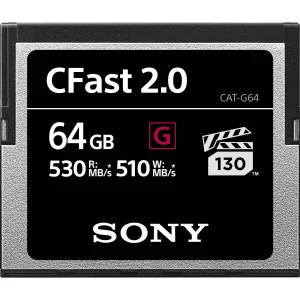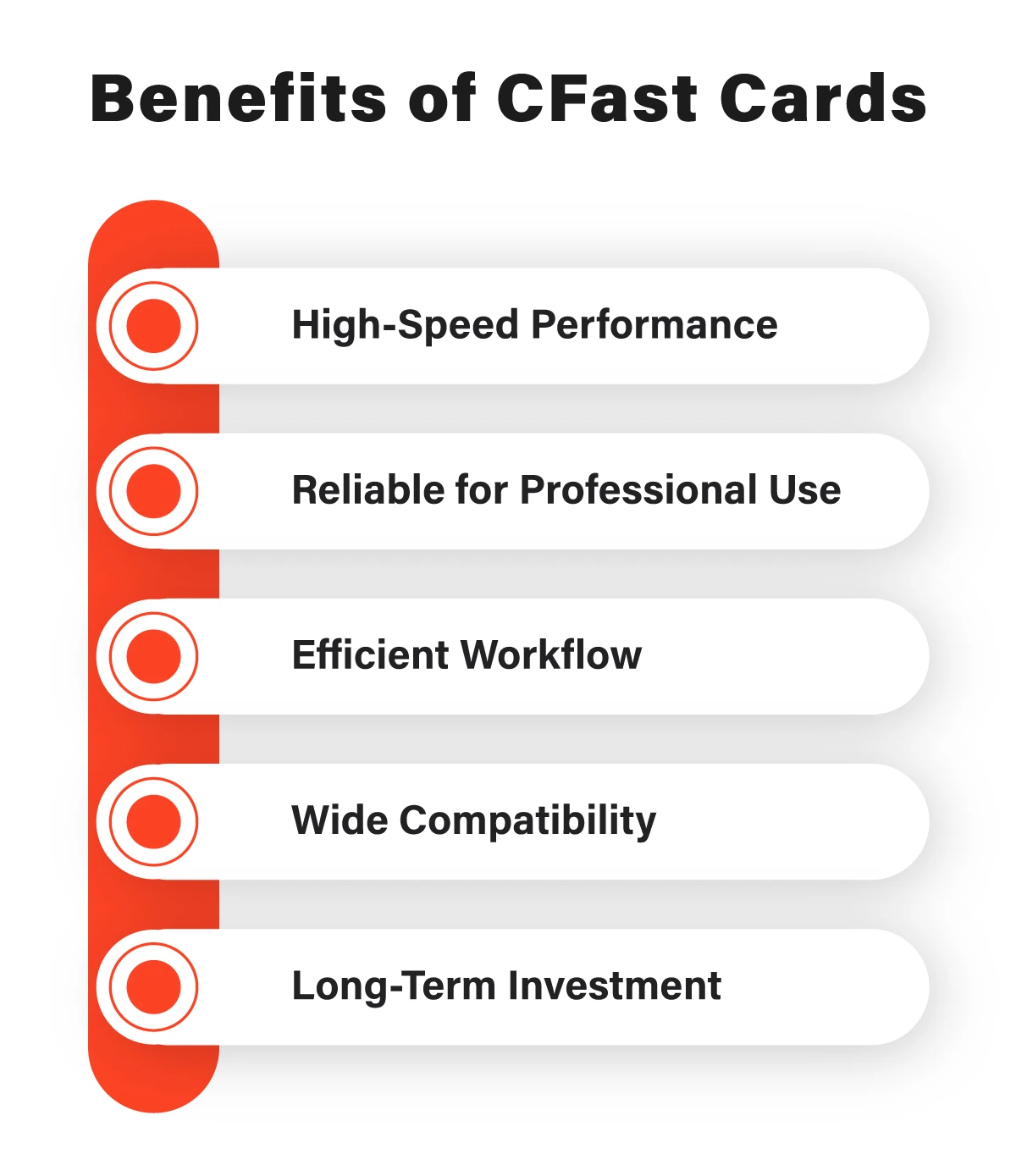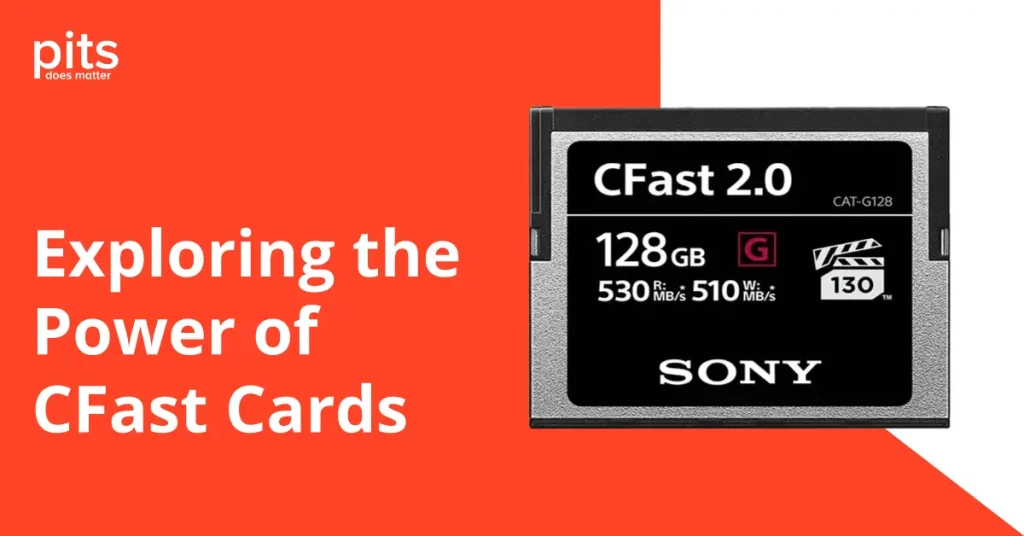In the continually evolving landscape of digital technology, storage solutions assume a pivotal role in augmenting efficiency and performance across various industries. Amidst the multitude of storage options, CFast cards have emerged as transformative elements, proffering rapid data transfer rates and remarkable storage capacities. Within this blog post, we shall embark on an exploration of the realm of CFast cards, delving into their definition, operational mechanisms, and the outstanding advantages they bring forth compared to their predecessors. Therefore, let us embark on a comprehensive journey to uncover the intricate details of CFast cards!
What Constitutes a CFast Card?
A CFast card, succinctly named “CompactFast,” stands as a high-performance memory card purpose-built for professional-grade applications necessitating swift data read and write speeds. In terms of physical dimensions, it closely resembles a CompactFlash (CF) card but distinguishes itself with significantly enhanced capabilities. The primary domains of CFast card application lie within industries such as cinematography, broadcasting, and high-resolution photography, where expeditious and dependable data transfer holds paramount importance.
At the core of CFast cards resides their utilization of flash memory technology. Flash memory, celebrated for its non-volatile attributes, retains data integrity even in instances of power removal.

This technology facilitates expeditious read-and-write procedures, rendering it exceptionally well-suited for applications requiring instantaneous data management. CFast cards employ NAND flash memory chips, renowned for their capacity to store extensive data within a confined physical footprint. During the process of reading from or writing to a CFast card, the card’s controller assumes responsibility for the data transfer. This controller meticulously supervises the data’s transit between the host device and the card, thereby enhancing the speed and dependability of the operation.
Advantages of CFast Cards
1
Remarkable Read and Write Velocities
One of the most noteworthy benefits associated with CFast cards resides in their remarkable read and write speeds. These cards adeptly manage data-intensive tasks, ensuring that professionals can work without encountering vexing impediments. Whether it entails capturing high-resolution videos or swiftly capturing a series of images, CFast cards excel in delivering the requisite performance.
2
Tailor-Made for High-Resolution Media
CFast cards are customarily crafted for professionals engaged in high-resolution media formats. The expeditious data transfer speeds empower cinematographers and photographers to effortlessly capture and store 4K, 6K, and even 8K videos. This capability proves indispensable for preserving the quality and integrity of such high-definition content.
3
Augmented Workflow Efficiency
With their exceptional celerity, CFast cards contribute to the optimization of workflows across various industries. The rapid data transfer minimizes the waiting time for professionals during file read or write operations, enabling them to channel their energies into creative processes. This boost in efficiency has the potential to elevate productivity and, ultimately, yield superior outcomes.

CF Card vs. CFast Card: The Progression
Prior to the emergence of CFast cards, professionals primarily relied on CompactFlash (CF) cards as their preferred storage solutions. While CF cards possessed notable attributes during their era, CFast cards ushered in a new era of innovation. Let’s conduct a comparative analysis of the two:
1
Velocity
CF cards typically featured read and write speeds that were commendable for their period, but CFast cards elevated this aspect significantly. The read speeds of CFast cards can surpass 500MB/s, with write speeds exceeding 400MB/s. In contrast, CF cards typically offered read speeds below 150MB/s and write speeds around 100MB/s. The substantial disparity in speed underscores the substantial advancement CFast cards introduce.
2
Physical Dimensions
CFast cards retained the physical dimensions of CompactFlash cards, thereby ensuring compatibility with pre-existing slots and devices designed for CF cards. This seamless transition to CFast cards proved advantageous for professionals who had already invested in CF technology.
3
Storage Capacity
Both CF and CFast cards have witnessed improvements in storage capacities over time. However, CFast cards, owing to their advanced technology, possess the ability to accommodate larger storage capacities. This enables users to store copious amounts of data without compromising on speed.
CFast 2.0: Unleashing Advanced Performance
In tandem with the relentless progression of technology, storage solutions such as CFast cards continue to evolve and enhance their capabilities. CFast 2.0 represents a noteworthy iteration, introducing even swifter speeds and augmented features. With read speeds surpassing 600MB/s and write speeds exceeding 500MB/s, CFast 2.0 cards firmly establish themselves as the preferred choice for professionals who demand unwavering performance.
The digital media landscape places a premium on efficiency, speed, and reliability. CFast cards seamlessly rise to meet these demands, equipping professionals with the requisite tools for capturing, storing, and transferring high-resolution content effortlessly. As we have previously examined, these cards offer unparalleled read and write speeds, rendering them indispensable in industries where time sensitivity prevails. With CFast 2.0 pushing the boundaries even further, it becomes evident that these cards are poised to endure and reshape data handling practices.
Whether one is a filmmaker striving to seize the perfect cinematic moment or a photographer committed to preserving fleeting instances, CFast cards empower individuals to elevate their creative endeavors. While we eagerly anticipate future innovations in the realm of storage solutions, CFast cards presently stand as unrivaled champions of speed and performance.
Frequently Asked Questions
What Constitutes a CFast Card?
A CFast card, abbreviated from “CompactFast,” represents a high-performance memory card meticulously engineered for professional applications demanding rapid data transfer speeds. It finds widespread application in sectors such as cinematography, broadcasting, and photography, where the efficient capture and storage of high-resolution content are paramount.
How Does a CFast Card Differ from Alternative Memory Cards?
CFast cards are purpose-built to provide blazingly swift data read and write speeds, rendering them particularly suited for data-intensive operations. While sharing the same physical form as CompactFlash (CF) cards, CFast cards distinguish themselves with markedly improved performance, especially in the realm of high-definition media.
What Advantages Do CFast Cards Offer?
CFast cards offer a multitude of advantages, most notably their lightning-quick read and write speeds, rendering them ideal for tasks such as recording 4K or 8K videos and capturing high-resolution images. They contribute to the efficiency of workflows by minimizing waiting times, proving particularly valuable in professional environments where time efficiency is paramount.
Can CFast Cards Be Employed in Devices Compatible with CompactFlash (CF) Cards?
Indeed, CFast cards are designed with compatibility in mind, ensuring seamless operation within devices equipped with CompactFlash card slots. This facilitates a smooth transition to CFast cards for professionals who have previously invested in CompactFlash technology, obviating the need to replace their existing equipment.
"*" indicates required fields
